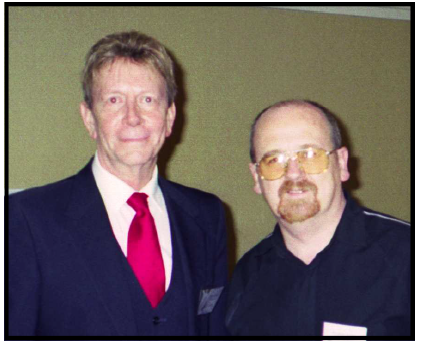
Skip Rydberg (left) with Barry Keane at the JFK Lancer Conference in Dallas November 2003
This is an updated version of an article which was first published in the
November 2002 edition of the Dealey Plaza Echo,
the journal of the British research group Dealey Plaza UK.
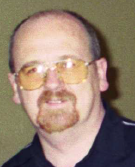
Barry Keane is Vice-Chairman of Dealey Plaza UK and here he examines the work of Harold “Skip” Rydberg, the man described by Commander James J. Humes as “a hospital corpsman, second class, and a medical illustrator in our command at Naval Medical School .” Rydberg was responsible for the schematic drawings of Kennedy’s head and upper back wounds which he reproduced from verbal information given to him by Commanders Humes and Boswell in March 1964.
The Day of the Assassination
Petty Officer 2nd Class Harold Alfred Rydberg stood at parade rest, resplendent in his Dress Blue uniform on the large circular drive leading to the entrance to Bethesda Naval Hospital. The time was about 7.00pm; the date was 22nd November 1963.
Several hours earlier, ‘Skip’ Rydberg had been teaching a class in medical illustration at The National Naval Medical Centre at Bethesda, Maryland, when the terrible news from Dallas came. He stopped the class, commenting that no one could learn under these dreadful circumstances. Together with his four students, Rydberg remained glued to the radio until Kennedy’s death was announced about an hour later. Plying themselves with coffee, they prepared for a long day. Although the hospital was/is not strictly speaking a military base, the rear gates were secured and everybody was put on alert.
The enlisted men were ordered to return to quarters to await orders.
Meanwhile, during the flight back to Washington, Admiral Burkley, JFK’s physician had advised Jacqueline Kennedy that an autopsy on the body of her husband would be required. She was told that for reasons of security, a military hospital would be preferred. The options given were Walter Reed, an Army hospital, or Bethesda Naval Hospital. Because the late President had served in the Navy during World War II, she chose Bethesda (William Manchester: Death of a President, published by Michael Joseph, 1967; p.405).
JFK’s body at Bethesda
Because JFK was in the Navy, Rydberg expected the autopsy to be performed at Bethesda. It came as no surprise when at about 5pm, he and the other enlisted men were ordered to change into Dress Blues, their ceremonial uniform, and line up outside the hospital entrance
off Wisconsin Avenue. President Kennedy’s body was on its way.
At about 7.00pm, the motorcade arrived. He counted 30 pairs (thirty!) of motorcycle policemen. In retrospect, the question has to be asked where this level of security had been in Dallas. A helicopter landed at the nearby helipad, disgorging military brass and taking off soon after.
In the grey Navy Ambulance Rydberg observed that Jacqueline Kennedy’s hand was on the casket. He also noticed that after the entourage entered the hospital it was full 15 minutes before the ambulance was driven to the rear of the building where the morgue was situated.
After completing their duty of controlling the crowd of onlookers, Rydberg and the rest of the enlisted men were relieved of their station at 8.30pm. Rydberg then changed into civilian clothes and went to a restaurant with some friends and talked about the events of the day, still not believing what he had witnessed.
After the funeral, three days later, he went back to his normal routine, little realizing that he still had another part to play in this saga – an unwitting role in history he has since tried to correct.
Background and Military Career
I learned the following personal details of Harold Rydberg’s life and career from correspondence and a series of telephone conversations with him over several months. Harold Rydberg was born in Chicago on 25th April 1940. He was raised in Sarasota, Florida, where he received his early education, drawing being a special talent he soon revealed. After graduating in 1958, the 18-year old Rydberg joined the United States Navy, receiving his initial training in San Diego, California, where he attended Hospital Corpsman School and completed a 26-week course to become the equivalent of what is now known as a paramedic. In 1959 he was posted to Parris Island, near Beaufort, South Carolina, to the Naval Hospital which took care of the Marines.
It was here that he gained the rank of Petty Officer 3rd Class, or E4.
In 1961, Rydberg’s talent for drawing was officially recognized and he received orders to attend the Medical Illustration School at the National Naval Medical Centre, Bethesda, Maryland. He graduated in 1962 after completing a grueling 26-week, 888-hour didactic course in advanced anatomy and physiology, surgical procedures and the multilevel disciplines of the medical arena.
He was then ordered to remain at Bethesda and take over the Medical Illustration Department.
Under Secret Orders
In March 1964, one hundred days after the assassination of President Kennedy, Rydberg was summoned to the office of Captain John Stover, the Commanding Officer of the Navy Medical School. It was explained to him that Commanders Humes and Boswell, two of President Kennedy’s autopsy surgeons, were about to testify before the Warren Commission and they were in need of his special talents. He was put under secret orders to prepare medical illustrations of the wounds sustained by President Kennedy. When he later asked Humes why they were not using the photographs taken at the autopsy, Humes told him they were deemed too shocking, and out of deference to the Kennedy family they had been sealed by the FBI and the Secret Service and were not available for testimony.
Over the weekend of 14th/15th March 1964, with a Marine guard just outside the door, Rydberg worked in a small empty ground floor office at Bethesda. There was no artist’s table on which to work so he had to use a flat desk and had nothing but verbal descriptions from Humes and Boswell. He had to rely on his own memory of what Kennedy had looked like, and his expertise of anatomy.
The drawings were done life-size and in water colour on separate 30”x 20” art boards. The two doctors were not present all the time and as Rydberg worked alone, he became increasingly skeptical of the methods and the accuracy and veracity of his efforts. Despite this growing sense of unease, however, he completed his work to the best of his ability. About two weeks later, he received a personal letter of commendation from Captain Stover.
The reader will note that there is no mention of the assassination of President Kennedy, no mention of Humes and Boswell by name, and the Warren Commission is referred to as “ … a very high level agency of the United States Government.” I find the following sentence from Stover’s letter very revealing: “The.) illustrations thus produced most accurately depicted the situation required and immeasurably assisted the medical presentation.” (My own underlining).
When I remarked on this to Rydberg during one of our many telephone conversations, he replied wryly: “Yes, I noticed that too.”
Illustrations from Stewart Galenor’s excellent book Cover-Up (published by Kestral Books, New York, 1998), documents 9, 10 and 11.
The illustrations produced by Rydberg were designated Commission Exhibits 385, 386 and 388 and can be found in the Warren Commission 26 Volumes at 16H 977 and 984. (CE 387 is the Autopsy Report, signed by Commanders James J. Humes, J.Thorton Boswell and Lieutenant Colonel Pierre Finck.
When Rydberg’s drawing designated Commission Exhibit 386 is directly compared with an autopsy photograph an immediate discrepancy can be observed.
The location of the lower wound in the drawing is above the shoulder line, but the autopsy photograph clearly shows that it is in fact below.
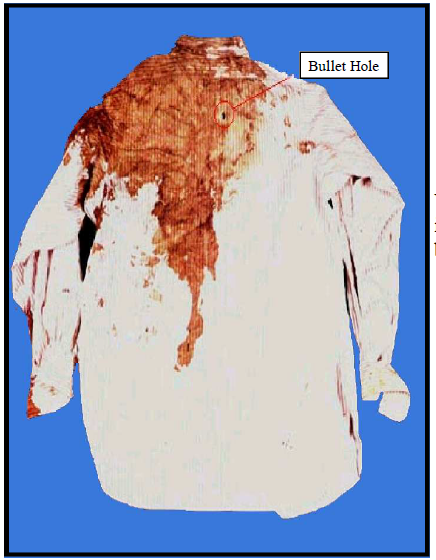 When the shirt that Kennedy was wearing is studied the bullet hole again is well below the line of the shoulder.
When the shirt that Kennedy was wearing is studied the bullet hole again is well below the line of the shoulder.
The trajectory of the bullet as depicted in Rydberg’s drawing. Commission Exhibit 385, is misleading because the actual entry wound is in fact several inches lower. It was raised to the neck position to fit in with the assumption that the wound in the front of the neck is a wound of exit.
To have Oswald fire from the sixth floor of the Book Depository and to support the Single Bullet Theory, the entry wound would have had to be in the neck.
To have Oswald fire from the sixth floor of the Book Depository and to support the Single Bullet Theory, the entry wound would have had to be in the neck.
Yet a comparison between Rydberg’s drawing, Commission Exhibit 388 and Zapruder frame 312, the last frame before the head-shot, it can be seen they were trying to reconcile a low entrance wound in the back of the head with Oswald’s assumed position on the sixth floor of the Book Depository.
The Record Speaks for Itself
The President’s Commission met to hear the autopsy surgeon’s testimony at 2 p.m. on March 16, 1964, at 200 Maryland Avenue NE. Washington, D.C. Present were Chief Justice Earl Warren Chairman, Senator John Sherman Cooper, Representative Gerald R. Ford, John J. McCloy, and Allen W. Dulles, members. Also present were J. Lee Rankin, general counsel; Francis W. H. Adams, assistant counsel; Norman Redlich, assistant counsel; Arlen Specter, assistant counsel; and Charles Murray,observer.
Commander Humes had the following exchange with assistant counsel Arlen Specter regarding the drawings. This was the day immediately following Rydberg’s completion of his drawings (2H 349-350):
HUMES: “When appraised of the necessity for our appearance before this Commission, we did not know whether or not the photographs which we had made would be available to the Commission. So to assist in making our testimony more understandable to the Commission members, we decided to have made drawings, schematic drawings, of the situation as we saw it, as we recorded it and as we recall it. These drawings were made under my supervision and that of Dr. Boswell by Mr. Rydberg, whose initials are H.A. He is a hospital corpsman, second class, and a medical illustrator in our command at Naval Medical School.”
SPECTER: “Did you provide him with the basic information from which these drawings were made?”
HUMES: “Yes sir.”
SPECTER: “Distances, that sort of thing?”
HUMES: “Yes sir. We had made certain physical measurements of the wounds, and of their position on the body of the late President, and we provided these and supervised directly Mr. Rydberg in making these drawings.”
SPECTER: “Have you checked the drawings subsequent to their preparation to verify their accuracy?”
HUMES: “Yes sir.”
SPECTER: “And proportion?”
Here Humes starts to waiver on his reliance on the accuracy of the drawings.
HUMES: “I must state these drawings are in part schematic. The artist had but a brief period of some 2 days to prepare these. He had no photographs from which to work, and had to work under our description, verbal description, of what we had observed.”
This last statement confirms Rydberg’s account and underlines his sense of unease in preparing what were in fact only representations of the wounds and not a true illustration of what actually occurred.
The next Specter/Humes exchange I believe is even more pertinent:
SPECTER: “Would it be helpful to the artist, in redefining the drawings, if that should become necessary, to have available to him the photographs or X-rays of the President?”
HUMES: “If it were necessary to have them absolutely true to scale. (In my opinion it was crucial: Keane) I think it would be virtually impossible for him to do this without the photographs.”
SPECTER: “And what is the reason for the necessity for having the photographs?” Humes now plainly admits the drawings are practically worthless as evidence.
HUMES: “I think that it is most difficult to transmit into physical measurements the – byword the – exact situation as it was seen to the naked eye. The photographs were – there is no problem of scale there because the wounds, if they are changed in size or changed in size and proportion to the structures of the body and so forth, when we attempt to give a description of these findings, of the bony prominences, I cannot, which we used as points of references, I cannot, transmit completely to the illustrator where they were situated.” (2H 350)
The Commission was expected to draw its conclusions based on palpably unreliable information, when the most accurate images existed and should have been utilized. This failure to scrutinize the best evidence is a glaring example of the Commission’s obviously preconceived agenda.
These drawings were for many years the only visual representations of Kennedy’s wounds the public were allowed to see. They gave a misleading impression of the injuries sustained by Kennedy bolstering the Warren Commission’s conclusion that Oswald was the sole assassin, if indeed he fired any shots at all.
Sworn to Silence
Rydberg was under orders not to discuss his own part in the events under threat of Court-Martial, as were those who were present at the autopsy of President Kennedy. This order was not rescinded until the H.S.C.A. began its investigation in the late 70s. He received this standard letter from the Surgeon General of the Navy, Vice Admiral W.P. Arentzen in March 1978.
In May 1968, two months before he was due to leave the Navy, Rydberg wrote to Humes and Boswell, requesting letters of recommendation. He asked them to include their comments on the illustrations that he had prepared for their appearance before the Warren Commission.
Humes replied with a glowing appraisal of his work in the field of medical illustration, including the following comments:
Boswell’s reply, however, was somewhat different in tone. He deferred Rydberg to Humes and the Medical School, but he did include these tortured comments.
“I continue to be somewhat circumspect about putting anything in writing or discussing this due to continuing controversy … I would be willing to comment in vague fashion or generalities relative to your skill in medical illustration.”
It is clear that Boswell was very unhappy about discussing what took place in the morgue at Bethesda on the evening of 22nd November 1963. Did he see something different to what was described in the autopsy report? Humes’ testimony before the Warren Commission takes up nineteen pages, including questions, over nineteen thousand words. Boswell’s is one page and only five hundred words. He deferred the Commission to the answers Humes gave, saying very little directly himself.
Below is a section of a memo Assistant Counsel Arlen Specter wrote to the General Counsel of the Warren Commission J. Lee Rankin, on April 30th 1964, where he states his doubts about the reliability of the three drawings.
He included this prophetic sentence. “Some day someone may compare the films with the artist’s drawings and find a significant error which might substantially affect the essential testimony and the Commissions conclusions.” Then he quotes directly from the autopsy report.
“The complexity of those fractures and the fragments thus produced tax satisfactory verbal descriptions and are better appreciated in the photographs……..”
Clearly even Specter was concerned that future historians would realize that as far as this aspect of the investigation went, there were serious flaws. In my opinion, the Rydberg drawings were a deliberate attempt to cover up the true nature of Kennedy’s wounds and therefore mislead the public into believing the Warren Commission’s lone assassin theory.
Vain Attempts
Over the years, Harold Rydberg has made repeated attempts to gain access to the autopsy photographs of Kennedy with the object of creating more accurate medical illustrations. He wrote several letters to Burke Marshall, the Kennedy’s lawyer, who had power of attorney over the photographs. After explaining his role in the Warren Commission and his reasons for requesting access to them, he received this response from Marshall (Jan. 1979):
“Before deciding on your request, I will have to have your assurance that, if the request is granted, you would nevertheless comply with the restrictions in the deed of gift that prohibits reproduction of the autopsy materials, whether by drawings or otherwise.”
Rydberg replied:
Rydberg’s request was not granted.
He had to wait until the photographs entered the public domain as a result of the efforts of others. Historical accuracy was not paramount in this case as is evident from not only Rydberg’s experience but also those of the many others who have tried over the years to find the truth.
Rydberg was never called to testify before any of the investigations into the assassination.
For many years he was unable to talk about his role and his unease in being an unwitting participant in what is clearly a cover-up of the truth. Part of his efforts to set the record straight was to write a book entitled “The Head of the Dog.” This was published by 1st Book Library in 2001. He describes it as a “factionalized” account of the conspiracy to murder the President. He believes Ninety percent of his book is true.
Rydberg has never wavered in his desire to correct an historical error in which he feels he was used to further the aims of the conspiracy. The cover of his book, in his opinion, more accurately depicts the head wounds.
Rydberg now retired from the military has been in recent years an adjunct faculty member at the Art Institute of Fort Lauderdale, Ft. Lauderdale, Florida. His duties encompassed medical illustration/forensic illustration while teaching courses in human anatomy, design, draped figure, watercolor, and color application, the mechanics of the human body, rendering life-like movements, techniques in pen and ink, water colour, perspective, carbon brush drawing, and stippling. He also taught the use of art in multi-media application, such as sculpting, computer applications and design concepts.
He recently completed a Masters Degree on Criminology, which includes his critique of the Warren Commission’s investigation. He will now go on to the Ph.D. level as a Forensic Psychologist, enhancing the community law-enforcement arena by including his medical/forensic illustration experience to enhance the depiction and profiling of criminal behavior from crime-scene and victimology. Skip Rydberg presented at the 2003 JFK Lancer Conference on his experience in producing the Illustrations for the Warren Commission. He emphasized his unease at having his name on an historical document which is inaccurate.
Acknowledgements
I would like to thank Ian Griggs and Mark Bridger for their encouragement and advice. In particular I want to thank Harold ‘Skip’ Rydberg for his unfailing courtesy and patience during many fascinating hours of discussion on the telephone and at our meetings in Dallas in November 2003.
-Barry Keane,
London,
United Kingdom
April 2007
email: barry.keane2@btinternet.com

at the JFK Lancer Conference in Dallas November 2003
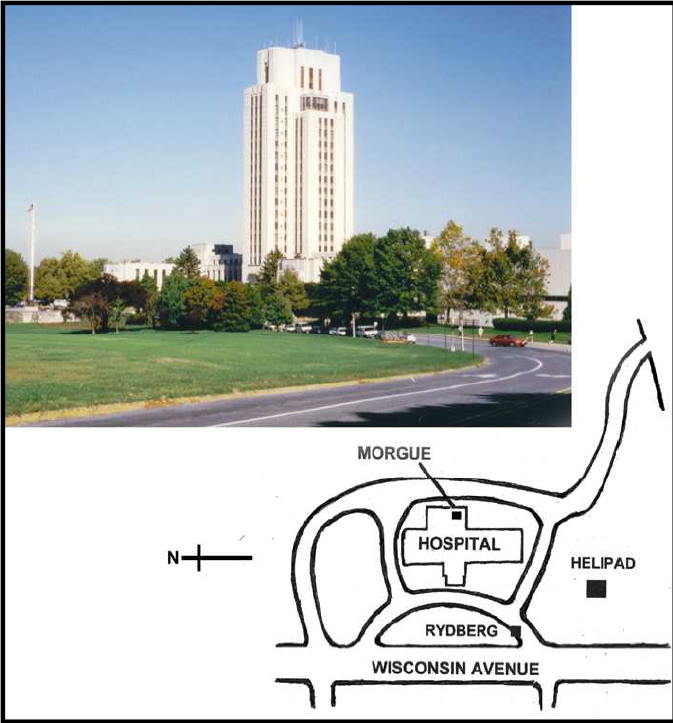


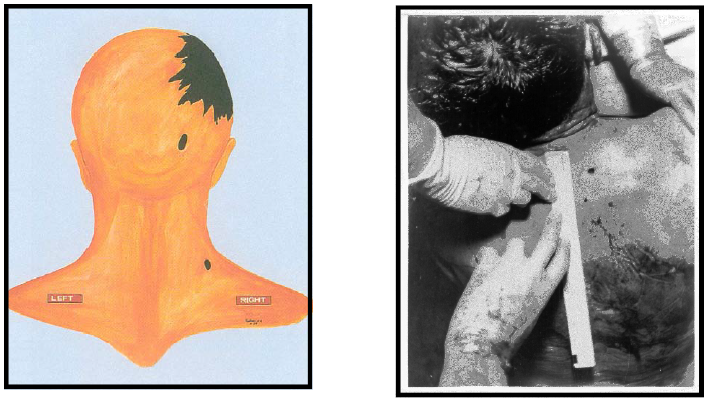
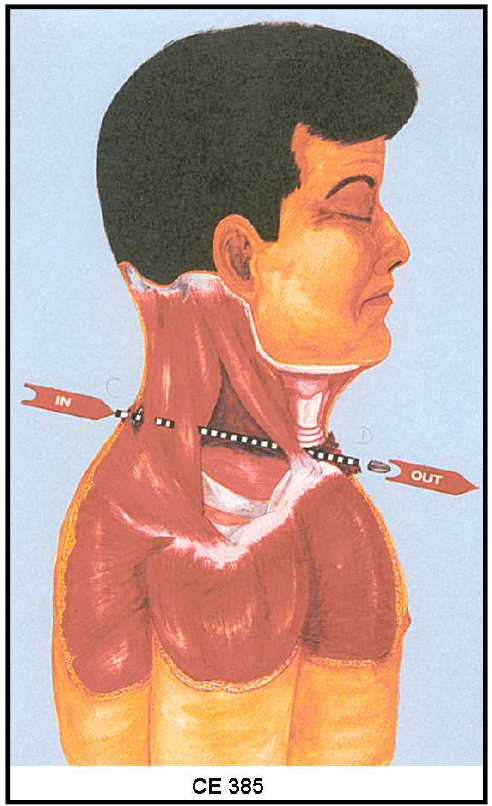
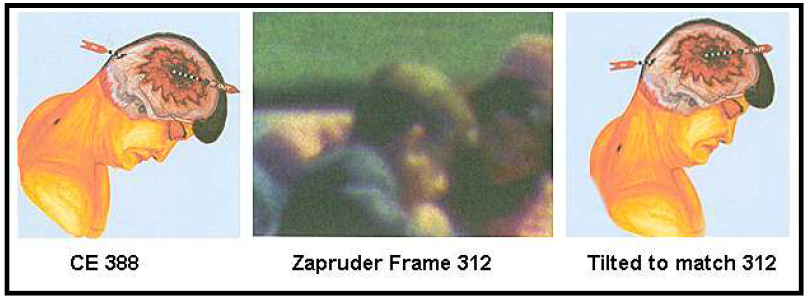


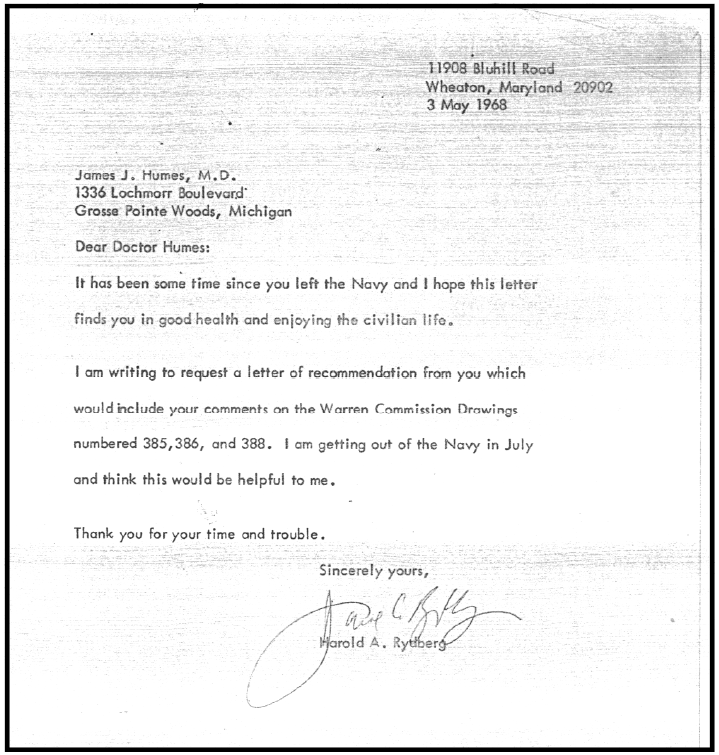

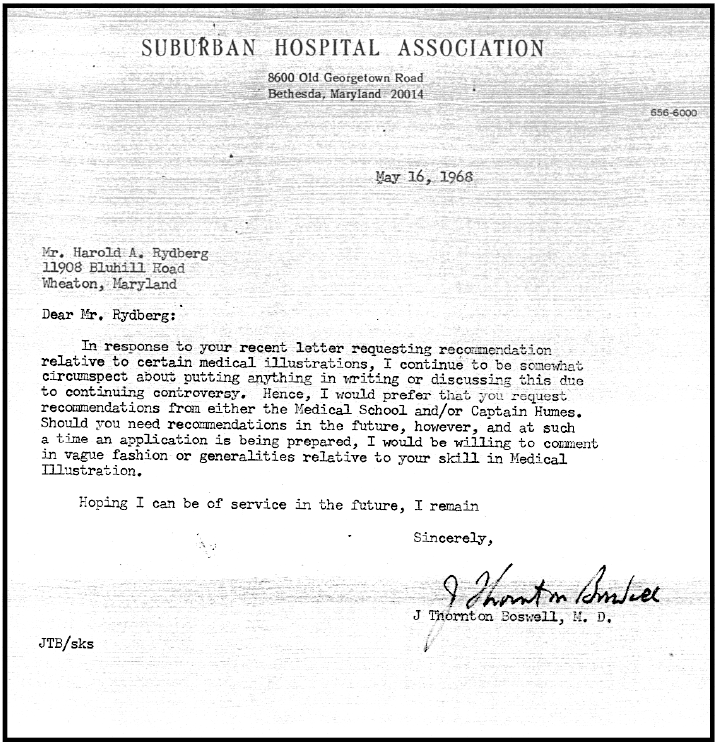
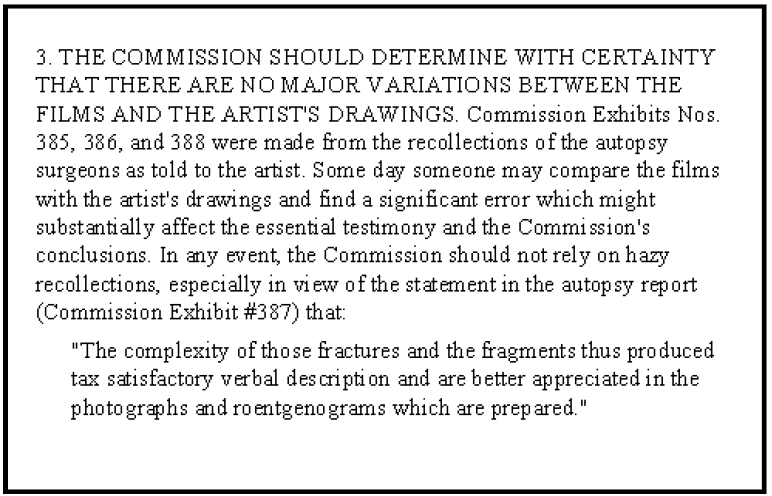

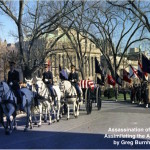
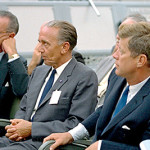
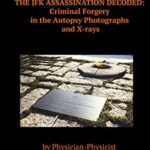
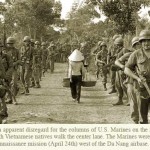
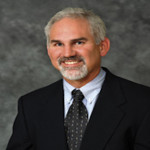
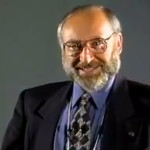
Nice article, Barry. Just one thing. If the wound was as Ryberg shows it on the cover of his book, how did the surgeons at Parkland miss the skull wounds at the top of JFK’s head?
The film depicts a dramatic last-minute cancellation of the mission by the Carter administration and Mendez declaring he will proceed with the mission. Carter delayed authorization by only 30 minutes, and that was before Mendez had left Europe for Iran.
A rather interesting and informative article, Mr. Keane, thanks for sharing. It’s way past time to put this fairytale about a lone gunman to rest.
Thank you Alan.
Putting the fairytale to rest requires having no faith in our governments.It requires us all to question everything we are told by authority. The individual often feel powerless, and it is much easier to except what we are told as long as we feel safe. As long as we believe our government is protecting us from our enemies. To accept that our government is in fact the enemy is too unsettling for many. A collective will is needed to reveal the truth, but it remains allusive. You may wish to read my tribute to JFK on the 52nd anniversary of his death http://dealeyplazauk.org.uk/pdfArticles/JFK_52nd_Anniversary.pdf
PS Mount Kennedy is in Canada not Alaska as I state.
I have to say, this is a most EXCELLENT article and also critically important. Thank you Barry, and if you have the opportunity, thank Mr. Rydberg as well! I have a publication coming out in November, and I’d like to ask you some questions via email if you don’t mind…and thanks again.
Thank you,fire away.